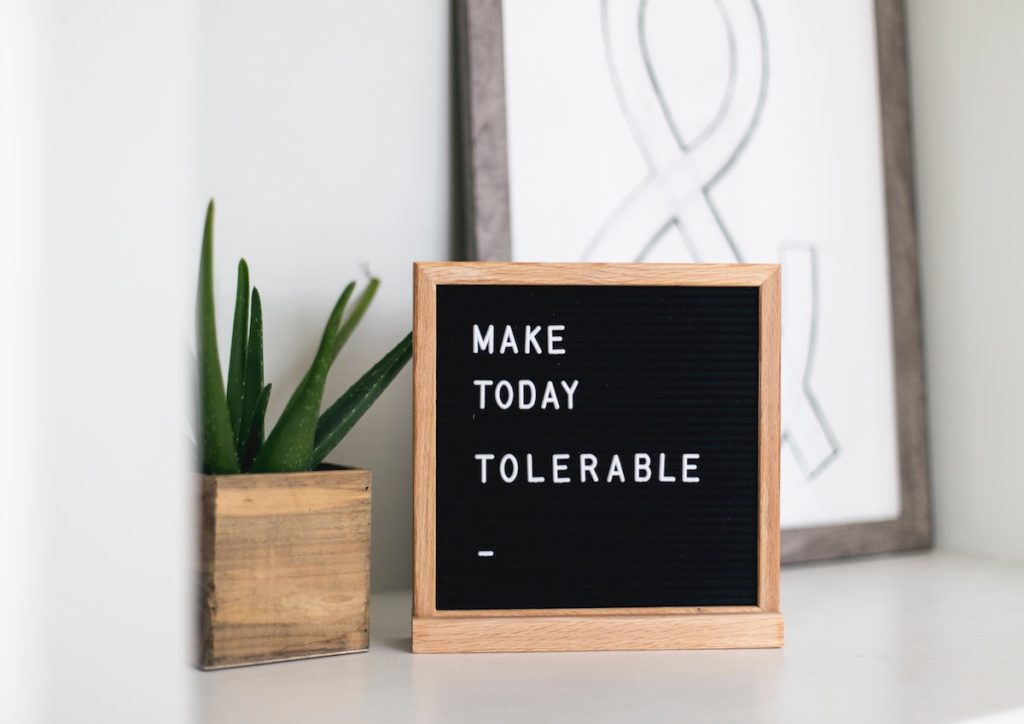
Earlier this year, the suicide of a public figure in the UK drew a huge amount of public interest, and consequently a huge amount of media coverage. In turn, this media coverage resulted in a heated debate about the ethics of reporting on suicide. The media industry faced criticism for its potentially excessive coverage of the loss, but responded by suggesting that reporting the death was in the public interest.
Specific media outlets were also criticised for insensitive and potentially harmful reporting. We know from research that poor reporting of suicide may have a negative impact on the audience it reaches, with studies finding that reports can be associated with an increase in suicidal behaviour (Pirkis & Blood, 2010).
Conversely, good reporting of suicide has the potential to contribute to helpful conversations about mental health. Little research is available about the potential positive effects of reporting, but it’s possible that it could be a factor in reducing suicide rates (Sisask & Värnik, 2012).
In the UK, media guidelines exist to ensure that suicides are reported in a way that minimises both potential health risks and further distress for bereaved family and friends (Samaritans, 2019). However, an analysis of British media reports of suicide published across a single month in 2014 found that only 13% of articles adhered to these guidelines (Utterson, Daoud &, 2017).
Whilst the statistical impact of reporting is well understood, it is critical to understand the personal impact that the reporting of a death can have on bereaved family and friends. The timely study that is the focus of this blog was published shortly after the loss mentioned above and gives a voice to those with lived experience of bereavement by suicide (Gregory et al, 2020).

Quantitative research tells us that poor reporting of suicide is associated with risks to health of the wider population, whereas qualitative research allows us to understand the personal impact on family and friends.
Methods
This paper (Gregory et al, 2020) reports on data collected as part of a large study looking at the broad impact of sudden bereavement (Pitman, Osborn, Rantell & King, 2016). The study was an online survey sent to students and staff at 37 universities and colleges across the UK using each institution’s mailing system. The survey was held in 2010 and included 3,432 participants between 18 and 40, who had suddenly lost a close friend or relative at the age of 10 or above. 614 of these participants had been bereaved by suicide.
This paper used answers to a single question from the survey: “Please describe any positive or negative experiences you may have had after the death in relation to the following: police force, funeral directors, coroner’s office, healthcare staff, press reporting on the death.”
140 participants mentioned the press in their response to this question. These answers were initially categorised into positive and negative responses, then analysed more closely using thematic analysis. Coding was carried out independently by two researchers (to ensure that it was robust), with a basic coding framework agreed after discussion. This continued to be refined throughout the analysis process.
Results
Thematic analysis of the data brought out three main themes:
1. Value placed on respecting the privacy or wishes of the bereaved
Participants often thought that journalists were intrusive in their approach to getting information for their story. Some felt upset and resentful due to a lack of consultation, although a small number were happy with the consultation that had taken place. Other participants were upset about the lack of coverage of their loved one’s death. Some participants felt that press coverage meant that they lost control of information about the death. Participants had different views about the amount of detail that was appropriate to report, particularly in relation to the use of photos and stating the cause of death, but all felt that describing the method used was inappropriate.
2. Respect accorded to the deceased
Participants stated that it was important for articles to talk about the life and achievements of the person who died. It was particularly upsetting when reports included false or particularly negative information about the person who died; sometimes this was due to journalists relying on information from people who did not know the person who died as well as close friends and family, as these were the only people they could contact.
3. The role of the press in promoting suicide prevention messages
Participants believed that the press could help raise public awareness and understanding of suicide through their reporting. Some talked about positive experiences of this happening, whereas others commented that in their case it was a missed opportunity.

Study participants emphasised the value of respecting the wishes of the bereaved and the life of the person who died.
Conclusions
The results make it clear that bereaved friends and family have different individual preferences when it comes to how their loss is reported. Rather than specific rules, it seems to be more important that journalists consult friends and family about what to include in an article and how they publish it.

Being consulted by journalists about the contents of an article is particularly important to bereaved family and friends.
Strengths and limitations
This study has a number of strengths, particularly its clear methodology and large sample size. The authors themselves highlight the key limitations of the study.
As the data is from 2010 it’s possible that the typical approach to reporting a suicide has changed since then, along with our general attitude towards mental health and suicide (Evans-Lacko, Henderson & Thornicroft, 2013), and so this may not be an up-to-date reflection of the media.
The authors point out that their sample was limited to mostly white females; this lack of variation in sample demographics is common to research in this area and seems to be difficult to avoid (Kristensen, Weisæth & Heir, 2012). This sample did, however, have more variation in both age and relationship to deceased than is often found in study samples.
The paper is also limited by the single question used in the survey. It’s possible that including several questions that specifically asked about experiences of interacting with press would have resulted in additional useful information. Despite this, results do generate clear themes similar to a previously published study that also explored a British sample’s experiences of the reporting of their loved one’s suicide (Chapple, Ziebland, Simkin & Hawton, 2013). So whilst this study may not add much new knowledge, it does strengthen the existing evidence.

Whilst this study only drew data from a single survey question, it has produced clear and consistent results.
Implications for practice
In terms of improving practice, authors of the study suggest that bereavement charities could provide a media spokesperson to the families of people who die by suicide to work with the press. Whilst this could be an effective solution, this would be practically difficult, given the limited resources of charities, and typically tight deadlines for journalists. A more achievable solution could be to update existing guidelines. Guidance for journalists are clear about the need for sensitivity, but could perhaps more clearly emphasise the need for consultation.
A recent study of British journalism students (not currently published in a peer-reviewed journal) found that only 27% of surveyed students had been taught about suicide reporting guidelines (Walker, 2019). Consistent teaching about the potential impact of poor reporting at the beginning of journalist’s careers could be another effective way to tackle some of the issues raised by this study.
On a personal note, as a researcher I currently interview participants who have been bereaved by suicide for my own study. I have noticed that every participant I have interviewed since the death referenced in the introduction has mentioned it in conversation. They have commented on the extensive coverage that was difficult to avoid, and the emotional impact that it had on them by bringing up memories of their own loss that they would preferred not to think about. When we consider the distress that reporting a suicide can cause to the friends and family of that person, we should also be aware of the much wider impact that it may have for others with a similar lived experience. Perhaps a next step for research in this area?

Improving guidelines for journalists and raising awareness of these guidelines could be a simple yet effect way to ensure that suicides are reported in a way that doesn’t cause additional distress to those personally impacted by a loss.
Statement of interests
One of the researchers involved in the study is a member of supervisory panel of Hannah Scott (the author of this blog). However, the Hannah Scott had no involvement in the study.
Links
Primary paper
Gregory, P., Stevenson, F., King, M., Osborn, D., & Pitman, A. (2020). The experiences of people bereaved by suicide regarding the press reporting of the death: qualitative study. BMC public health, 20(1), 1-14.
Other references
Chapple, A., Ziebland, S., Simkin, S., & Hawton, K. (2013). How people bereaved by suicide perceive newspaper reporting: qualitative study. The British Journal of Psychiatry, 203(3), 228-232.
Evans-Lacko, S., Henderson, C., & Thornicroft, G. (2013). Public knowledge, attitudes and behaviour regarding people with mental illness in England 2009-2012. The British Journal of Psychiatry, 202(s55), s51-s57.
Kristensen, P., Weisæth, L., & Heir, T. (2012). Bereavement and mental health after sudden and violent losses: A review. Psychiatry: Interpersonal & Biological Processes, 75(1), 76-97.
Pirkis, J., & Blood, W. (2010). Suicide and the news and information media: A critical review. Commonwealth of Australia.
Pitman, A. L., Osborn, D. P., Rantell, K., & King, M. B. (2016). Bereavement by suicide as a risk factor for suicide attempt: a cross-sectional national UK-wide study of 3432 young bereaved adults. BMJ open, 6(1), e009948.
Samaritans (2019). Samaritans Media Guidelines. Retrieved from https://www.samaritans.org/about-samaritans/media-guidelines/
Sisask, M., & Värnik, A. (2012). Media roles in suicide prevention: a systematic review. International journal of environmental research and public health, 9(1), 123-138.
Walker, J. (2019). Academic urges journalism lecturers to step up teaching on suicide reporting. Press Gazette. Retrieved from: https://www.pressgazette.co.uk/academic-urges-journalism-lecturers-to-step-up-teaching-on-suicide-reporting/
Utterson, M., Daoud, J., & Dutta, R. (2017). Online media reporting of suicides: analysis of adherence to existing guidelines. BJPsych bulletin, 41(2), 83-86.
Photo credits
- Photo by Roman Kraft on Unsplash
- Photo by Annie Spratt on Unsplash
- Photo by Alex Wigan on Unsplash
- Photo by AbsolutVision on Unsplash
- Photo by Kari Shea on Unsplash
